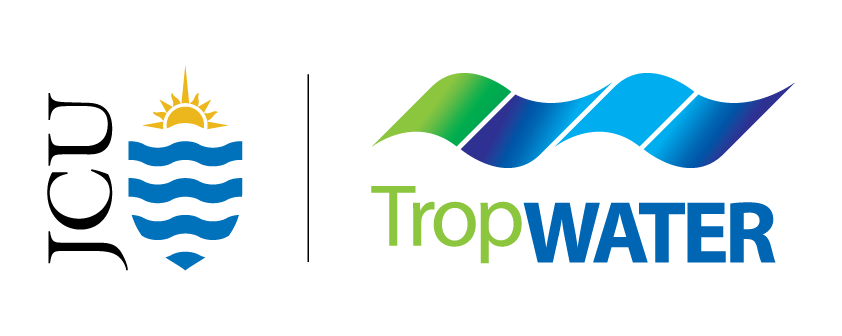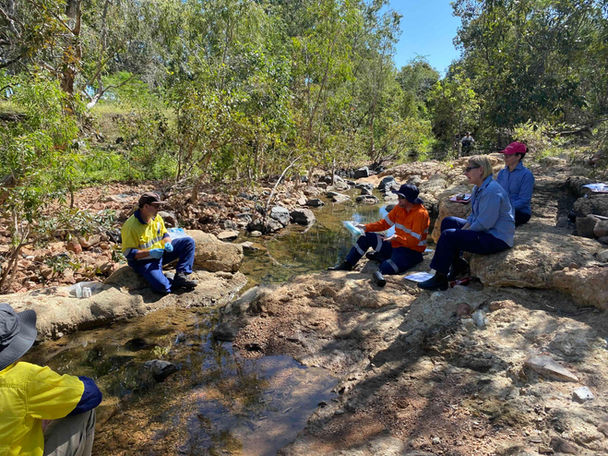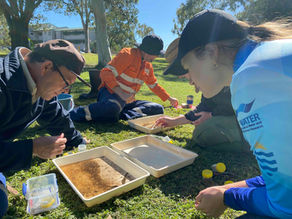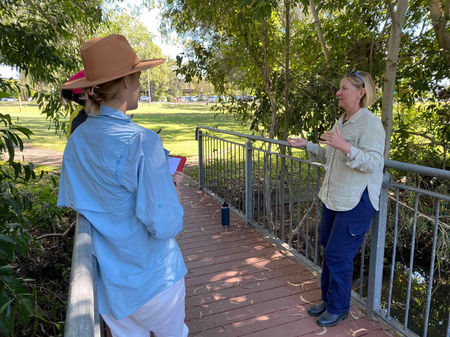Our services and capabilities
How we apply science for environmental solutions.
Our capabilities include water quality and eDNA labs, specialised training programs, technology development, and a range of environmental assessments and restoration efforts. We provide science-based solutions, stakeholder training, and innovative monitoring technologies.

Our lab utilises cutting-edge environmental DNA (eDNA) technology to detect and monitor invasive and endangered species, playing a vital role in bolstering biosecurity measures.
TropWATER's eDNA lab advances genomics and molecular biology research. We develop innovative methods and protocols for field collection and laboratory analysis. We offer a range of services, from primer design to sample collection and analytical services. We provide the following services:
-
Design and validation of eDNA assays.
-
Experimental design.
-
Sample collection.
-
Sample processing.
-
Data analysis and visualisation.
-
Training and workshops.
Read more on our eDNA Laboratory page.
TropWATER’s Water Quality Laboratory specialises in monitoring and analysing water samples, providing services in inorganic and organic chemistry. Our expertise spans various aspects of water quality research, supporting studies on freshwater streams, rivers, wetlands, reservoirs, groundwaters, and marine waters.
Our expertise allows us to address a wide range of environmental water quality challenges, providing essential data and insights that guide environmental management strategies, conservation initiatives, and policy decisions concerning water quality and ecosystem health, allowing for a holistic approach to water quality evaluation.
-
Our analyses include evaluating nutrient levels and potential pollutants that threaten freshwater and marine ecosystems.
-
Following extreme weather events like floods, we analyse water quality changes and contaminants introduced into water bodies. This helps TropWATER scientists understand the immediate and long-term impacts on aquatic ecosystems.
-
We also provide training in sampling and sample preservation techniques.
For further information about the services provided by TropWATER’s Water Quality Laboratory, please contact our Laboratory Manager, Michelle Tink on +61 (0)7 4781 5214 or email TropWATER.WQL@jcu.edu.au
Our Water Quality Lab provides comprehensive tailored services for James Cook University research and consulting projects, and a commercial analytical service for government agencies and industry.
Water Quality Laboratory
Laboratories
Short course in aquatic environment monitoring skills
Enhance your understanding and value-adding abilities in aquatic environment monitoring with TropWATER's short course. Ideal for field staff, recent graduates, and experienced professionals, this course focuses on optimising monitoring programs, contextual importance in environmental monitoring, and leveraging techniques and technologies for better insights. Contact Shelley Templeman for more information at shelley.templeman@jcu.edu.au.
eDNA workshops
This workshops gives a practical introduction to eDNA, along with the best eDNA sampling methods and strategies tailored to your needs. Led by eDNA experts, this workshop equips you with the skills and knowledge to apply eDNA approaches in aquatic environments. Optional laboratory work and sampling design sessions are available upon request. Duration: 1 to 2 days. Contact Cecilia Villacorta Rath for more information at cecilia.villacortarath@jcu.edu.au.
STEM waterways citizen science project
Engage in the STEM Waterways Citizen Science Project designed for school teams. Learn to study waterways in depth, identify scientific areas of interest, and contribute valuable data to local and global knowledge. Partnering with experts from TropWATER, Cairns Regional Council, Dawul Wuru Aboriginal Corporation, and more, this project offers access to facilities and support for high school teams in the region. Contact Shelley Templeman for more information at shelley.templeman@jcu.edu.au.
Traditional Owner and ranger training
We upskill, train, and teach Traditional Owners and Indigenous Rangers on sea Country in a range of environmental techniques. This includes drone, snorkelling, transect-based seagrass and coral monitoring, and local-scale dugong drone surveys. We deliver this training to multiple Traditional Owner groups across northern Australia. Contact Alexandra Carter at Alexandra.carter@jcu.edu.au for more information.
We offer advanced training in environmental science and conservation with our specialised workshops and programs.
Courses and workshops
Training
Our scientists take pride in maintaining and developing strong relationships with communities, Traditional Owners, and landholders. Working together allows us to address environmental impacts of joint concern and achieve common goals to help create a more sustainable future.
-
Coordinate and train Indigenous rangers, tourism operators and community groups to undertake monitoring at reefs and seagrass habitats.
-
Collaborate with Traditional Owners and upskill rangers to conduct seagrass mapping and monitoring.
-
Work with landholders to understand how, where, and when sediment moves from the land into key catchments.
-
Work with growers to monitor water quality, detect hotspots and improve management practices.
-
Find ways to incentivise restoration opportunities for landholders.
Community collaboration


Technology
Traditional and manual monitoring methods can be slow, labour intensive, and expensive. Innovative technologies have the potential to dramatically transform how we monitor and manage aquatic ecosystems. We are applying these technologies and developing our own to make data collection easier, more cost-effective, and scalable, so we can better tackle major ecological challenges.
-
Develop environmental DNA (eDNA) methods to cost-effectively detect invasive and endangered species and provide training in eDNA sample collection.
-
Combine satellite remote sensing data with aerial and field surveys to identify and monitor coastal ecosystems such as mangroves.
-
Use AI to track and monitor a range of species, including fish and dugongs.
-
Use underwater and land surveillance cameras to track species.

Aquatic surveys
Understanding species distribution and diversity is critical to aquatic ecosystem conservation and management, but collecting data in these environments can be challenging. Our scientists specialise in designing and conducting surveys suited to a range of aquatic ecosystems.
-
Conduct marine biodiversity surveys of fish invertebrates in human-made structures to improve habitats, such as jetties, marinas, and sea walls.
-
Use electro-fishing and drop cameras in wetland surveys to detect invasive fish and plant species, such as climbing perch and water hyacinth.
-
Provide training and short courses in aquatic environmental monitoring such as invertebrate surveys
-
Use environmental eDNA to monitor and detect species, including frogs, fish and more.

Environmental assessments and modelling
Industrial and urban development is growing, bringing with it an increasing risk to wetland, coastal, and marine environments. Informed decision-making is critical to identify and reduce these risks. Our scientists conduct essential work in environmental assessments and modelling to guide management decisions and inform conservation efforts.
-
Undertake environmental assessments for proposed dams, mine sites, port authorities and urban development, and provide advice to inform management decisions.
-
Conduct species and habitat distribution modelling to inform conservation and restoration.
-
Conduct environmental life cycle assessments from agricultural production.

Restoration
Coastal and marine ecosystem restoration has never been more urgent on a large scale, and our window of opportunity to regain what’s lost is vanishing. It's critical to address restoration needs in Australia, and our scientists are leaders in this field.
-
Build resilience of high priority reefs through leading targeted restoration programs, and provide scientific advice and guidance on restoration and coral reef monitoring.
-
Research seagrass resilience including restoration and recovery, connectivity, and environmental thresholds.
-
Investigate tidal barrier removal for mangrove restoration for blue carbon opportunities.
-
Examine the performance of restored natural and artificial constructed wetlands.
-
Find ways to incentivise restoration opportunities for landholders leveraging off ecosystem service markets, such as access carbon credit schemes.

Ecosystem and species mapping and monitoring
The tropics have a diverse range of aquatic ecosystems that face different threats and management challenges. To conserve and manage these ecosystems, we need to understand their distribution and how conditions may be changing.
-
Conduct long-term monitoring of water quality, aquatic ecosystems, and species, including inshore coral reefs, mangrove forests, seagrass meadow sand dugongs.
-
Identify and map potential restoration sites to maximise outcomes for biodiversity, carbon storage and water quality improvement opportunities.
-
Design robust ecological monitoring programs to help industries proactively reduce their risks.
-
Identify and map flood prone agricultural land for potential restoration to restore biodiversity, store carbon and remove nutrients and sediments.












